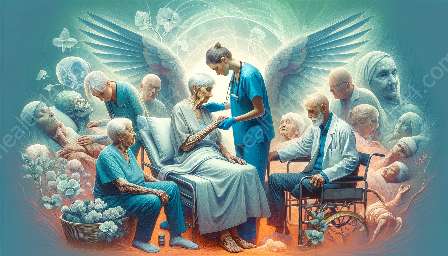Physical therapy plays a crucial role in helping older adults maintain mobility, manage chronic conditions, and improve overall quality of life. As part of the geriatric care continuum, physical therapy aims to optimize aging and promote successful aging by addressing specific needs and challenges unique to older individuals.
Understanding Optimal Aging and Successful Aging
Before delving into the benefits of physical therapy for older adults, it's important to understand the concepts of optimal aging and successful aging. Optimal aging refers to the process of maintaining physical and mental health, functional independence, and engagement in life as individuals grow older. Successful aging encompasses similar goals, emphasizing the importance of staying active, connected, and emotionally resilient.
Both these concepts underscore the significance of maximizing physical and mental well-being in older adults, aligning with the core objectives of physical therapy.
The Role of Physical Therapy in Geriatrics
Geriatrics, the branch of medicine focused on the healthcare of older adults, recognizes the impact of physical therapy in addressing age-related impairments, promoting rehabilitation, and enhancing overall health outcomes. Physical therapists are trained to assess and customize treatment plans tailored to the unique needs of older adults, with a focus on improving mobility, reducing pain, and preventing falls.
Furthermore, physical therapy interventions in geriatric care often include exercises to enhance strength, balance, and flexibility, as well as techniques to address joint stiffness, postural alignment, and musculoskeletal issues commonly observed in aging populations.
Benefits of Physical Therapy for Older Adults
1. Improving Mobility and Function: Physical therapy interventions target mobility limitations and functional decline, aiming to enhance older adults' ability to perform daily activities independently.
2. Managing Chronic Conditions: Physical therapists work collaboratively with older adults to develop strategies for managing conditions such as arthritis, osteoporosis, and cardiovascular diseases, thereby improving overall health and well-being.
3. Pain Management: Through modalities such as manual therapy, therapeutic exercises, and modalities, physical therapy assists in reducing pain and discomfort associated with age-related musculoskeletal issues.
4. Fall Prevention: Physical therapists implement fall prevention programs, encompassing balance training and environmental modifications, to minimize the risk of falls and related injuries in older adults.
5. Enhancing Quality of Life: By addressing physical limitations and promoting functional independence, physical therapy contributes to enhancing the overall quality of life for older adults, fostering emotional well-being and social engagement.
Integration with Optimal Aging and Successful Aging
Physical therapy aligns closely with the principles of optimal aging and successful aging by addressing the multifaceted needs essential for healthy aging. By empowering older adults to maintain physical function, manage chronic conditions, and prevent functional decline, physical therapy promotes the optimization and success of the aging process.
Moreover, the person-centered approach in physical therapy emphasizes individualized care, enabling older adults to actively participate in their wellness journey, fostering a sense of autonomy and control over their health and function.
Conclusion
Physical therapy for older adults serves as a vital component in the pursuit of optimal aging and successful aging. Through targeted interventions, comprehensive assessments, and personalized care plans, physical therapy contributes to enhancing mobility, managing chronic conditions, and promoting overall well-being in older individuals. Embracing the role of physical therapy in geriatrics is fundamental in nurturing a society where older adults can age optimally and lead fulfilling, independent lives.


